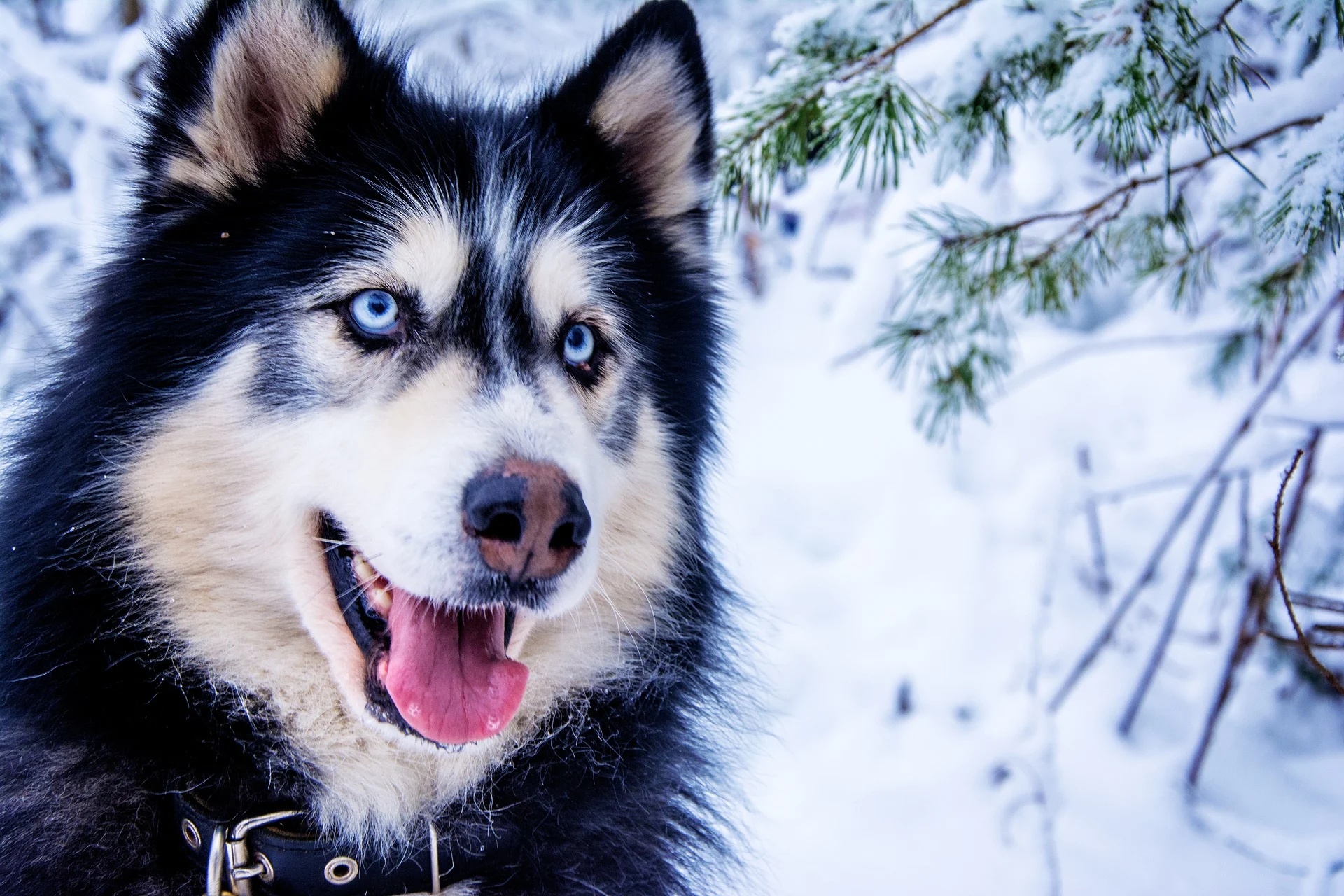The Siberian Husky is easy to identify: their blue eyes attract our attention immediately. Their eyes even remind some of the cold Siberia — their country of origin. But have you ever wondered why does the Husky have blue eyes? Well, you aren’t the only one. Because researchers did too!
t’s definitely easy to see why so many people are so drawn to Huskies. And it’s not only the eyes. One of the trademarks of this breed is also their thick coat that comes in a multitude of colors and markings! Many will also agree that they look like wolves! However, even though they really are athletic and really intelligent dogs, they will definitely be a big challenge for first-time dog owners.
But let’s now answer the question you are here for: Why do Siberian huskies have blue eyes?
What gives Huskies their blue eyes?
Siberian huskies are a breed of dog known for its resistance to extreme temperatures and beautiful blue eyes. While their resistance to temperature is due to their thick coat, their eyes remained a mystery for years. But now it seems that researchers found out why their eyes are this icy color.
But first know that the eye and coat color of the huskies can change with age. The final colors are defined in the first six months of life. So the light eyes of your Husky puppy may not stay like that forever.
Research results
This year, the largest comparative genetic study to date was carried out in dogs. Scientists carried out DNA tests to examine, among other things, the color of the eyes and the fur of the Siberian huskies.
The researchers found a gene variation that determines the eye color of these dogs.
The research was carried out on 6,000 specimens of this breed. The owners of the study participants used a DNA test device to determine or confirm the purity of the breed and to investigate possible health risks of their four-legged friends.
The success of this study is based on the fact that scientists were able to access a large amount of data provided by the test equipment.
The information was collected through an online survey from the owners of these pets, who voluntarily shared the necessary data. They also provided the researchers with photos of the animals.
Why do Siberian huskies have blue eyes?
The analysis of the collected information showed that a gene variant on the chromosome number 18 is related to the blue eyes of these eskimo dogs.
In blue-eyed huskies, there is a doubling of a DNA snippet in this chromosome that occurred near the AlX4 gene. It is related to eye development in mammals.
There are different dog breeds with blue eyes, including the Australian shepherd and border collies. In these races, however, the blue eyes are recessively inherited. This means that two mutated copies of the gene are required for the blue color to occur.
This genetic variation occurs in humans in the HERC2 and OCA2 genes, which leads to blue eyes. Gene variation in Siberian huskies leads to lower pigment production in the eye. This reduction in pigments causes the eye to look blue. And this condition than gives the Husky his signature icy blue eyes.
According to experts, there is no blue pigment. It is the way light falls on the eyeball and is reflected. This gives the appearance of blue, just as the sky looks blue, but space does not.
Massive support
One of the most striking things in this investigation was the large amount of information available to the experts. In recent years, they have also examined neurological diseases in German shepherd dogs.
This study became an absolute challenge to preserve the DNA of 40 samples of this breed, as they had to travel a few kilometers with material and equipment to take the samples.
Volunteers in this study took samples from their pets and then sent them to a collection center. Then they filled out an online form with details about the characteristics of their dog.
This dynamic lays the foundation for a new type of genetic research in the 21st century.
The owners of the Siberian huskies examined were happy to support the study. Rarely do you have the opportunity to participate directly in research studies of this kind.
This type of cooperation inspired researchers who have decided to further investigate the dog genome.
Projects are already being launched to learn more about the morphological properties of Siberian huskies and to carry out other studies on the health of these beautiful dogs.
While you’re here, read more about the Siberian Husky:

